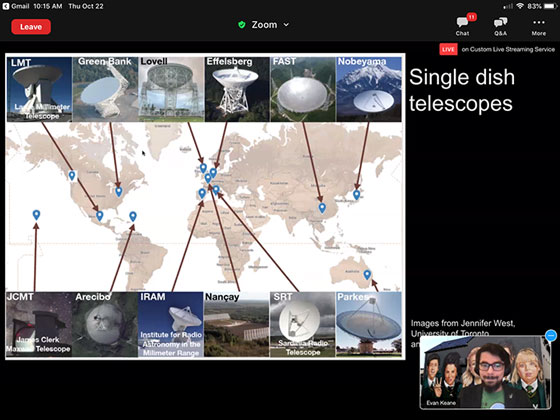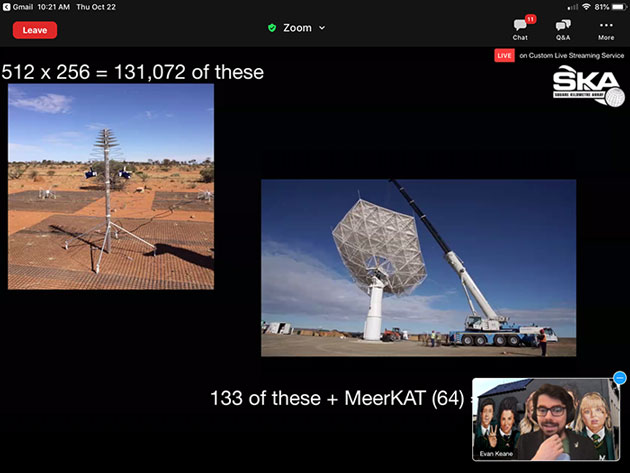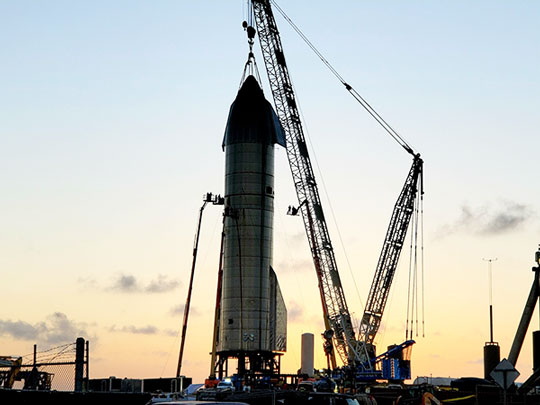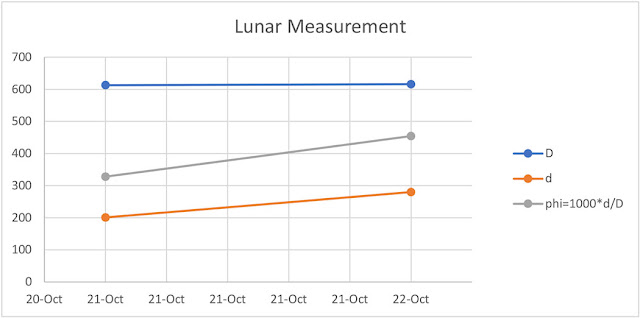Greetings from Palmia Observatory
Well here we are after spending most of last week tied up in front of the computer screen watching the 23rd annual Mars Society convention. Next week we, including you, can be tied up for the AAS 52nd Division of Planetary Science (DPS) meeting conducted online on October 26-30.
In the mean time, let's check in with the sun which has woken up a bit and has a sunspot.
 |
| The sun wakes up with a sunspot, DSLR, 300 mm, 1/500 seconds (Source: Palmia Observatory) |
Many astronomers, including a lot of OCA Mars observers, are out taking photos of the moon while it is at its closest approach. Check out this image from OCA Alan Lang, who took video images from Long Beach area and then selected and stacked some of the images with good seeing. Check it out and see if you wouldn't also begin to imagine seeing canals on Mars. Anyway, thanks for sharing, Alan!
 |
| Amateur captures image of Mars from Long Beach (Source: OCA Alan Lang) |
Another OCA Astronomer, Wally Pacholka, specializes in taking astronomical images from outdoors in national parks for example. Here we see an example where Wally captured Mars in the Valley of Fire State Park with Poodle Rock in the foreground. If you are looking for some frameable photos of astronomical targets, check out Wally's webpage. We recently purchased one of his images for one of the last available wall spaces at the observatory. Thanks for sharing, Wally!
 |
| Mars at Poodle Rock in Valley of Fire State Park (Source: Wally Pacholka, www.AstroPics.com) |
Other artists create imagined images of exotic conditions on planets that stirs our imagination. Recall, how Chesley Bonestell caught our imagination in the past as described in our blog post of December 3, 5 and 18, 2018. For now, consider this view of Saturn as if it were the same distance from us as the Moon. This is a really cool image sent to us by Doug at Curiosity Peak Observatory. Thanks for that Doug!
 |
| Wow, can you image the view? (As long as the gravity didn't get us) (Source: Twitter) |
Continuing on, in other news from SETI (www.seti.org) we sat in on an online presentation "Radio Astronomy: the end of big Dishes?" Two leading principal investigators presented how large arrays of small dishes is revolutionizing the field of radio astronomy. Examples from large single dish antennas from around the world and two arrays, CHIME in Canada and the Square Kilometer Array (SKA), located in South Africa and Australia, were given.
 |
| Radio Astronomy: the end of big dishes? (Source: www.seti.org) |
In this screenshot you can see examples of large radio dish antennas located around the globe. These large dish antennas have big apertures to receive weak signals, but their field of view is very, very narrow and if the signal were to occur outside of this field of view, it would be missed. Large arrays of smaller telescope antennas have much wider field of view and can scan the sky much more effectively.
 |
| Single big dishes around the world (Source: Evan Keane, SKA organization) |
Consider the Square Kilometer Array that is distributed across two continents. Here we see the antenna layout for the array in Australia and in South Africa.
 |
| SKA installed in South Africa and Australia (Source: Evan Keane, SKA organization) |
The design in each continent is such that it covers a very wide frequency range of signals from the sky. Note how in Australia the antennas are smaller, but the number of antennas is very large and distributed over a wide area. The antennas in South Africa are fewer but are arranged in a spiral pattern and have large collecting dishes to receive weak signals. In summary, the participants in the SETI meeting summarized the state of radio astronomy as belonging now to the arrays of antennas and not to the very large dish antennas. An example where arrays wins out is in the search for Fast Radio Bursts (FRB) that occur only randomly from different parts of the sky. The fact that some FRBs repeat from the same location leads the investigators to postulate that they originate from highly magnetic neutron stars, called magnetars. Pretty neat, thanks for the presentation, SETI!
 |
| Many types of small antennas in the array (Source: Evan Keane, SKA organization) |
In SpaceX news this week, a lot of action with the final fabrication work on Starship SN8 nosecone. Mary, @BocaChicaGal, has followed the work progress and we are all anxious to see the nosecone mounted on top of the Starship SN8 that is already undergoing test out at the launch site. Thanks for keeping us up to date, Mary!
 |
| Starship SN8 nosecone rolled out of the mid-bay (Source: Mary @BocaChicaGal) |
Just after the rollout of the stacked nosecone, we hear from SPadre, @SpacePadreIsle, that the SN8 nosecone was spotted being moved down the road from the fabrication area to the launch area. Thanks you for that news, SPadre!
 |
| Starship SN8 nosecone on the road to the launch site (Source: @SPadre) |
Then, shortly later we get another Twitter feed notifying us that the nosecone has arrived at the launch pad and after a work shift change we expect to hear about and see it lifted on top of the SN8 Starship. The next couple of days are going to be pretty interesting and the test hop of SN8 Starship is approaching very quickly. Wow, I sure would like to get back to Boca Chica for this test hop! There was some good news on the TV that risk of contacting COVID is very remote. Hmm, maybe time to schedule a trip to Boca Chica?
 |
| Starship SN8 nosecone arrives at the launch site (Source: @SPadre) |
Well after the SpaceX shift change in Boca Chica, the work goes on and here we see that the nosecone section has been lifted and secured on top of Starship SN8. It won't be too long till the test hop now!
 |
| Starship SN8 with nosecone lifted into place (Source: Mary @BocaChicaGal) |
Mary also found an ideal spot to photograph the Starship and we see here its reflection in some foreground water. That is really beautiful, thanks for that Mary!
 | |
|
Anyway back to reality, during the recent OCA general meeting, the regular scheduled speaker could not make it, so the former OCA club secretary, Bob Buchheim, made a presentation on how modern day amateur astronomers are able to repeat some of the astronomical observations that created modern day astronomy and could repeat those observations from their backyard. Bob has written two books on this subject and I have tried to do many of the observations myself. During this presentation Bob talked about the phases of the moon and how we can make measurements and predictions and understand the phase phenomena ourselves. We don't have to just rely on what is written down in some astronomy book, but we can make the measurements ourselves and see the result.
So, the project that I am summarizing here is the measurement of the phases of the moon. What you do is make observations of the moon over one month. For each lunar image, measure the maximum width of the crescent, d, and the maximum size of the moon, D, and then calculate phi = d/D, as shown below.
 |
| Making astronomical measurements from your backyard (Source: Bob Buchheim) |
Then after making a month's worth of observations, plot the values of phi as shown below. Note how the phase of the moon follows a sinusoidal curve.
 |
| Making lunar phase measurements from your backyard (Source: Bob Buchheim) |
So, this is the plan for the next month. Take an image of the moon and from that image measure d, D and calculate phi and plot it. In this image, taken with 300 mm DSLR on October 21 at 5:42 pm. The sun was still up and there were clouds near the moon, but the image turned out to be ok. Then use Photoshop or some other tool to make the distance measurements and stay dedicated and make the measurements for a month. Thanks for reminding us about that and how we can do that type of measurement ourselves, Bob!
 |
| First lunar data point, 10/21/20, d = 201, D = 613, phi = d/D = 0.328 (Source: Palmia Observatory) |
We found just enough time to make the second lunar measurement, and planned to make a third measurement, but the clouds are going to be in the way. Anyway, for these two measurements you can see that the crescent is getting wider. The data plot for these two data points is shown below. Note this plot has scaled the value for phi by a factor of 1000 so that both of the measurements and the one calculation show up better on the chart. How are the rest of you doing in your repeat in your own backyard of some of these famous early measurement in astronomical history?
 |
| Three data points is the start of our backyard study of lunar phase (Source: Palmia Observatory) |
Darn clouds! Ok, so the rest of you can follow along at home with your own observations. Until then though, we can get back to the topic of gravity and entropy. So for all of you physicist wannabes out there, take a look at the figure taken from PCW Davies book, "The Physics of Tim Asymmetry." in the left panel, labeled 'a', we see a collection of gas that has expanded and filled the box uniformly and this state is one of equilibrium and high entropy. In statistical mechanics we often start off with the case when all of the gas was initially in one small corner of the box. Then it normally expands to fill the whole box and the entropy increases and reaches a maximum when the gas is distributed randomly throughout the box. In panel 'b' we see what would happen if gravity were assumed to be present and the gas molecules would gravitationally collapse and the interesting result is that this state is even higher entropy. Previously we noted that black holes, which is the end result of unconstrained gravitational attraction, also have the highest entropy, so it doesn't seem unreasonable. But there is a lot of physics in understanding how the entropy of the collapsed ball of gas changes as time goes on. We have to account for the increased temperature and the production of new particles when stellar fusion begins. Hmm, it is going to be fun. Are you ready?
 |
| Gravity affects equilibrium and entropy (Source: PCW Davies, "The Physics of Time Asymmetry") |
Until next time, here from our burrow, stay safe, as we recover more of our freedom,

No comments:
Post a Comment